Recent Articles
Popular Makes
Body Types
2018 BMW i3 vs. 2018 Nissan Leaf: Which Is Best?
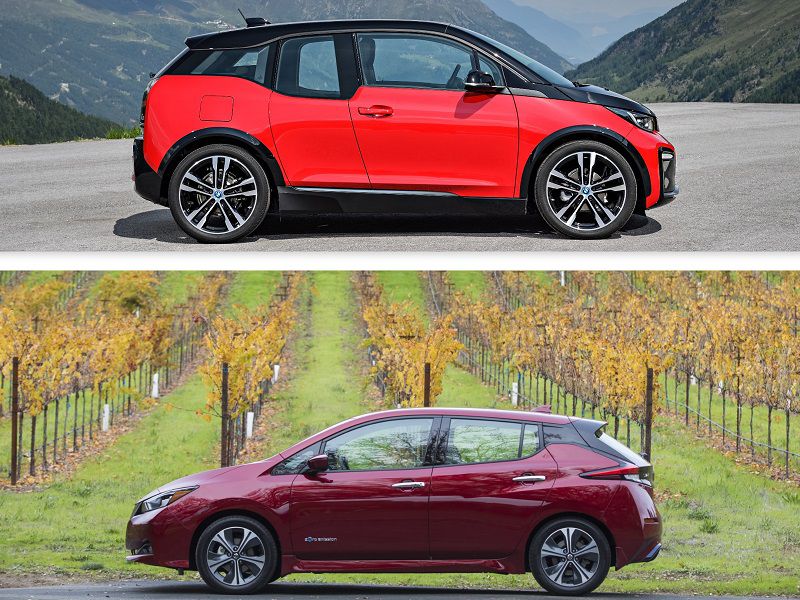
2018 BMW i3 2018 NissanLeaf Profile ・ Photo by BMW / Nissan
As battery technology improves, carmakers are taking advantage by adding electric vehicles with increased range to their product lines. At the same time, two early entrants in the EV sweepstakes — the Nissan Leaf and BMW i3 — now offer added capabilities, more equipment and, importantly, better range. So there are good reasons to believe that an electric vehicle like the BMW i3 or Nissan Leaf could be the right choice for you.
While they're not precisely mainstream, both of these cars provide the all-around drivability that could make them a good choice — depending, of course, on your usage requirements. Barring the need to drive cross-country on a regular basis, either car offers a lot to like and very little that will irritate you. Let’s see how they stack up against each other.
Simply Efficient Powertains
One clear difference between the Nissan LEAF and the BMW i3 is that the Nissan is available only in purely electric-only form, while the BMW can be purchased as a “pure-EV” or with a “Range Extender.” That’s a gasoline-fueled engine that is used to charge the battery pack when it is depleted. The two-cylinder gasoline engine does not drive the wheels; it is used only to power the i3’s generator.
The i3’s synchronous electric motor delivers a maximum output of 170 horsepower and peak torque of 184 pound-feet. For the 2018 model year, BMW introduced the i3s, a performance-oriented version. Its electric motor delivers 184 horsepower and peak torque of 199 pound-feet. The Leaf powertrain is simple in comparison. It uses a permanent-magnet synchronous AC electric motor that offers 147 horsepower and 236 pound-feet of peak torque.
BMW i3
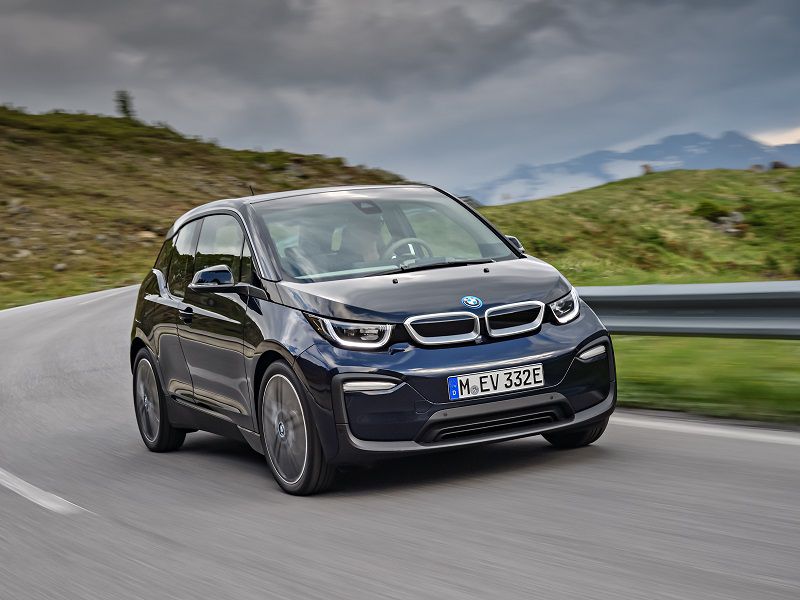
Photo by BMW
Range Is the Thing
Range is a key — probably the key — consideration when it comes to electric cars. A gasoline car can be refueled in a matter of minutes at numerous places across the country. An electric car’s battery pack requires a far-less-numerous charging station, and the charging process takes far longer than filling up your tank with gas. So battery capacity and the associated range before recharging are a big deal.
The 2018 Leaf is equipped with a 40-kWh lithium-ion battery that offers 151 miles of EPA-estimated range. The i3 has a 33.2-kWh lithium-ion battery that delivers 114 miles of range (or 107 miles in the more powerful i3s). With the Range Extender, overall range increases to an EPA-estimated 180 miles, and, of course, you can refuel the Range Extender gasoline engine to generate more electricity.

Photo by Nissan
Buzz on Charging
The EPA estimates that the Nissan LEAF’s battery pack will take eight hours to recharge fully using a 240-volt system. It estimates it will take five hours to do the same in the BMW i3 — which, of course, has significantly less range.
Charging the i3 is facilitated by the BMW i Charging Station that can supply 7.2 kW of power to charge the battery. This enables enough energy for an electric range of around 90 miles to be transferred to the car in three hours, about five times quicker than with a 120-volt charging cable. The Leaf, meanwhile, offers software that links drivers, vehicles, and communities to share power among electric cars and homes, other buildings, and power grids.
BMW i3
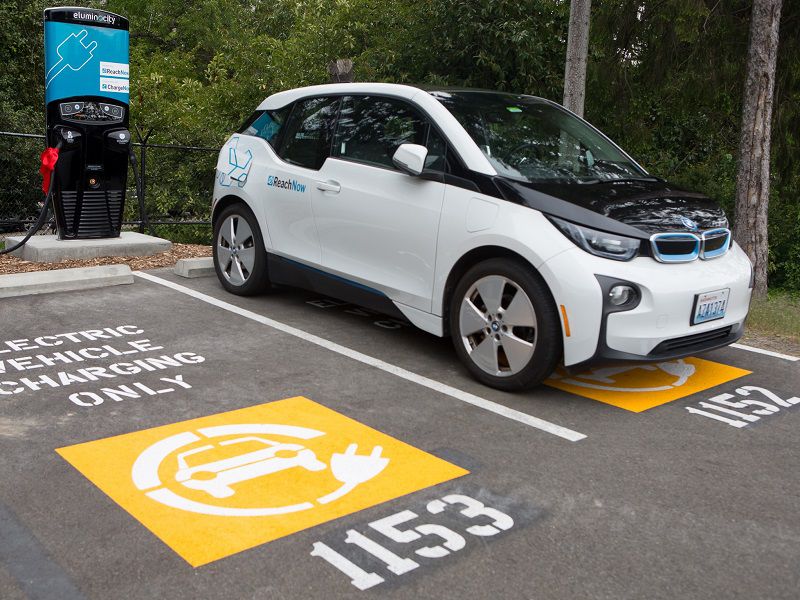
Photo by BMW
Exterior Design for Dual Audiences
Nissan executives told us that the goal of the second-generation Leaf's design was to bring it into the automotive mainstream and leave the futuristic look of the previous model to the history books. In that, they have succeeded. While the new Leaf isn’t a conventionally pretty car, it is certainly in the same design realm as other current Nissan vehicles. It is much more a conventional compact and much less a driving pod. Nissan wants the car to appeal to those beyond the bleeding edge of EV adopters.
On the other hand, the i3, expensively crafted of light, strong carbon fiber, is definitely designed for those who want to say, “Look at my cool EV.” And to some sets of eyes, it is very cool. To others, it is less pleasing.
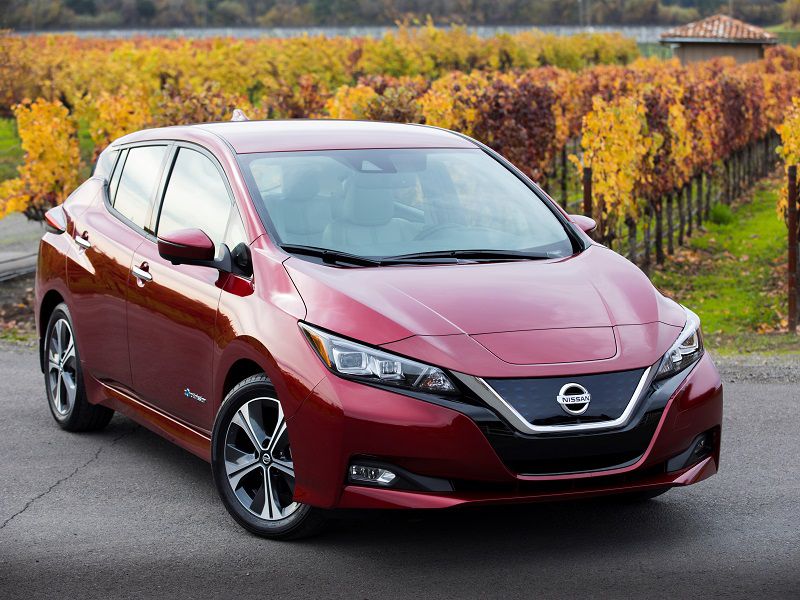
Photo by Nissan
Two Takes on Interior Design
Both the Leaf and the i3 offered interior designers a blank canvas, and they ran with it — but in two very different directions. To us, the BMW i3’s interior is the very best aspect of the car. The gauges are contained in an iPad-like display that extends upward from the low-slung, horizontal dash. Another tablet-shaped pod houses the infotainment system. In keeping with its environmentally friendly theme, the i3 interior uses genuine wood, leather, wool, and recycled materials.
The designers of the Leaf have taken a more conventional approach. The instruments, controls and infotainment “center stack” are attractive but would feel at home in any contemporary sedan. Only the shifter, which only enables you to select forward or reverse, suggests the Leaf’s EV nature.
BMW i3
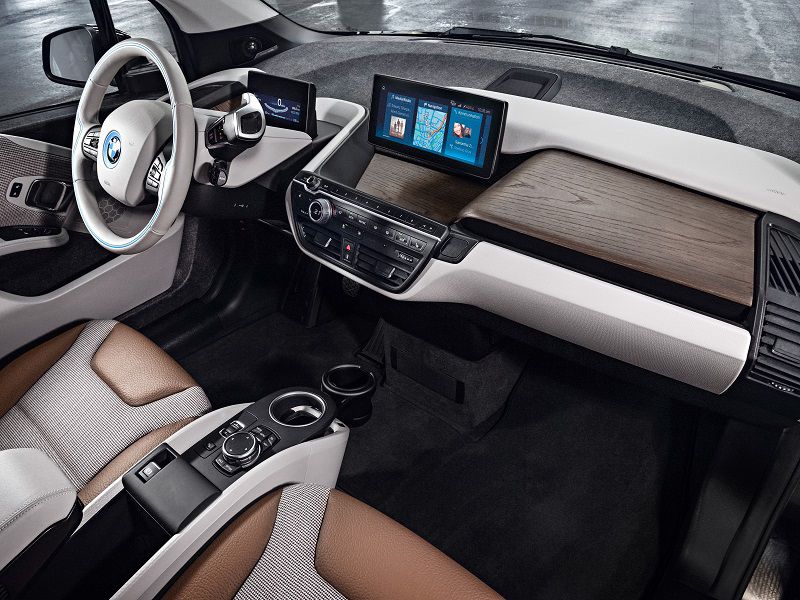
Photo by BMW
Advanced Safety Systems
The second-generation Nissan LEAF clearly has the edge over the first-generation BMW i3 in terms of active safety equipment. The Leaf offers Nissan’s ProPILOT Assist, a sophisticated driving assistance technology that combines adaptive cruise control with lane-keeping technology. Within its lane, the Leaf can maintain an interval with the car in front of it, slow down, stop, and resume to a pre-selected speed. Available advanced safety technologies include intelligent lane intervention, a lane departure warning, automatic emergency braking with pedestrian detection, blind-spot monitoring, and a rear cross-traffic alert.
On the i3, adaptive cruise control is available as part of an optional package that also includes a forward-collision warning and automatic emergency braking with pedestrian detection. Front and rear parking assist and a backup camera are also available.
Nissan Leaf
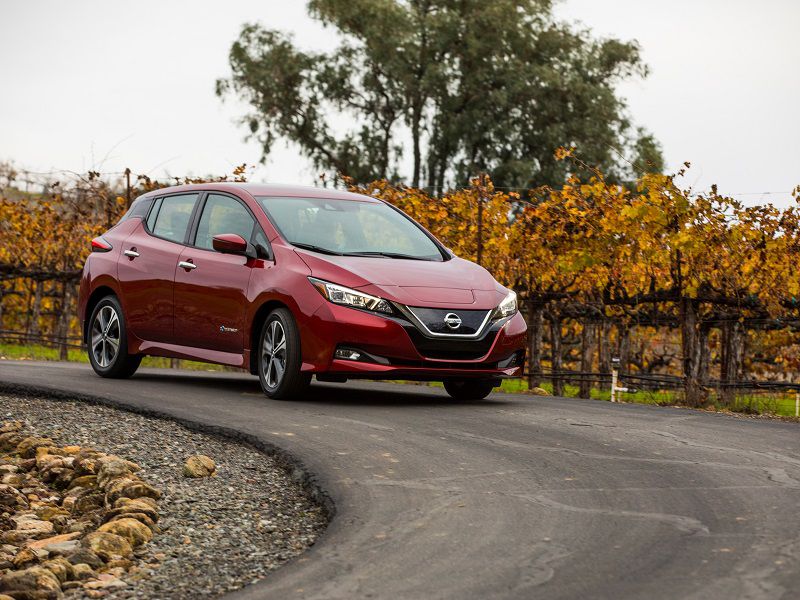
Photo by Nissan
Infotainment for the Modern Age
The Leaf’s available infotainment system includes a 7-inch touchscreen display. Standard features include an automatic temperature control with a timer to pre-heat/pre-cool the cabin and set charging times. Moving to the Leaf SV trim level brings a dedicated navigation system.
The i3 offers the latest version of BMW’s much-maligned but now very-much-improved iDrive. It controls numerous vehicle, infotainment, communications, and navigation functions. In vehicles equipped with the Navigation System Professional, the display is a 10.25-inch screen. The BMW infotainment system also includes “natural speech” voice recognition. The i3’s parking information service can also be used alongside the real-time traffic information system to locate available parking spaces in many major U.S. cities.
BMW i3
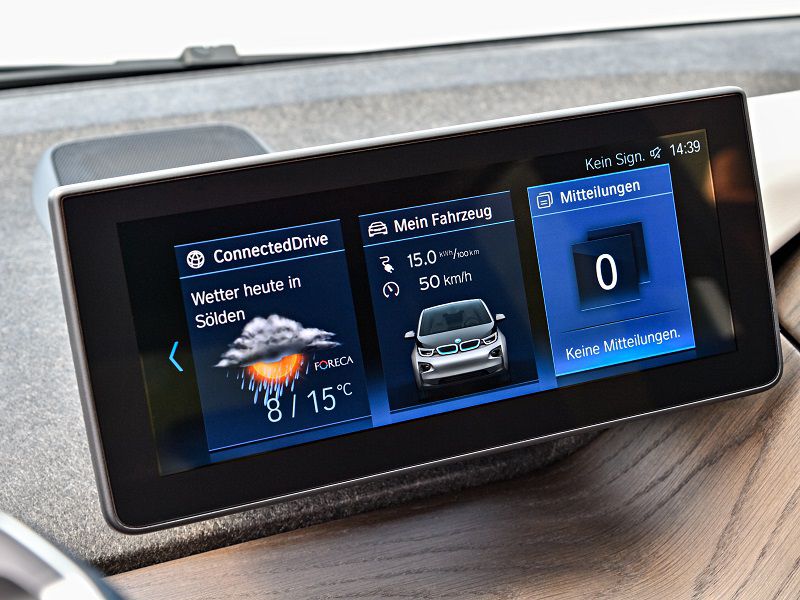
Photo by BMW
Sounding Off on Sound Systems
While both Nissan Leaf and BMW i3 are designed for forward-thinking drivers, each leaves a bit to be desired in terms of premium sound systems. The base audio system in the Leaf includes Bluetooth streaming audio and hands-free phone operation and SiriusXM satellite radio. The SV and SL trim levels offer a 7-inch touchscreen with Nissan’s pioneering surround-view camera system. The uplevel sound system is from Bose and has seven speakers. Apple CarPlay and Android Auto compatibility are part of the program.
In comparison, the BMW i3 takes a more minimalistic approach. The base interface is a 6.5-inch screen controlled by a knob. A bigger 10.25-inch screen is available as part of a package that also includes Apple CarPlay.
Nissan Leaf
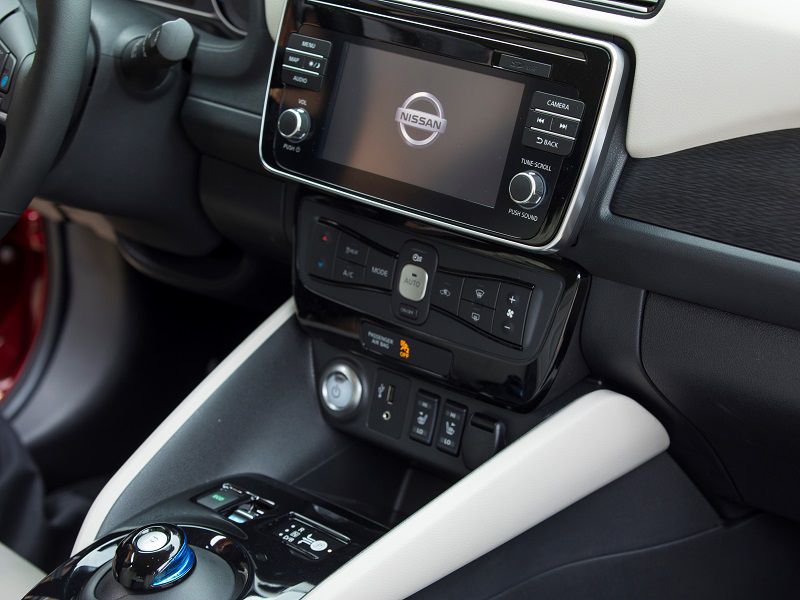
Photo by Nissan
Different Kind of Driving Fun
Despite their limited horsepower, both the Nissan Leaf and BMW i3 offer more driving enjoyment than you might guess. One advantage is the instant torque available from their electric motors. BMW claims the i3 will go from zero to 60 miles per hour in just 7.2 seconds. Its claimed top speed is 93 miles per hour. The i3s is even more fun to drive with an altered suspension designed for performance.
The Leaf is most notable for its one-pedal (“e-Pedal”) operation that doesn’t require you to apply the brakes. By lifting off the accelerator, you can bring the car to a smooth stop without touching the brake pedal. In practice, this setup is easy to get used to and reduces driving effort.
Tie

Photo by BMW
Pricing and Value — The Verdict
Compared to gasoline-powered cars of the same size and capabilities, both the 2018 Nissan LEAF and the 2018 BMW i3 are expensive. The Leaf has a base price of $29,990. The uplevel SV takes the price to $32,490. In comparison, the base BMW i3 has a base price of $44,450. With the Range Extender, that goes up to $48,300. The BMW i3s has a base price of $47,650, and with Range Extender that increases to $51,500.
Some tax incentives might be available to offset the purchase price. The high purchase prices are also somewhat balanced by lower operating cost, although electric vehicles typically have poor residual values. Overall, both the i3 and the Leaf offer a new way of achieving personal mobility while respecting the environment.
Nissan Leaf
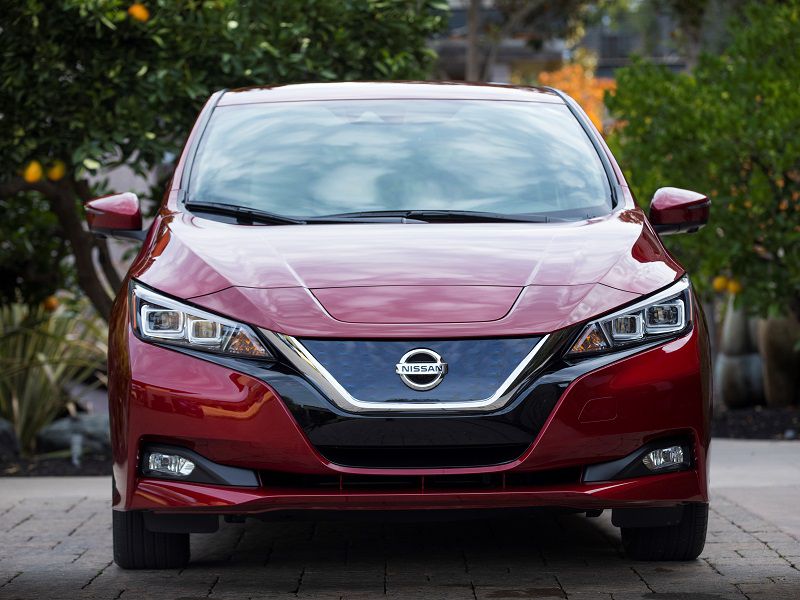
Photo by Nissan